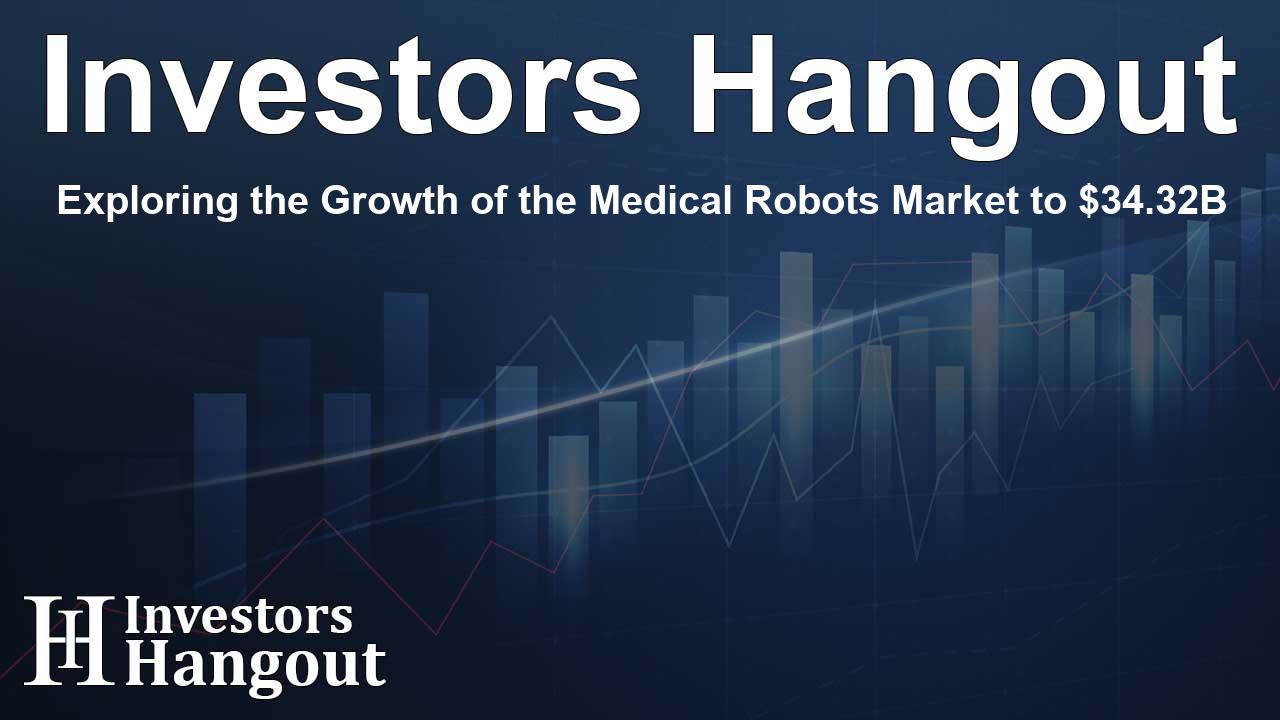Exploring the Growth of the Medical Robots Market to $34.32B

Exploring the Growth of the Medical Robots Market
The medical robots market is poised for remarkable growth, projected to reach a staggering USD 34.32 billion by 2031. With a compound annual growth rate (CAGR) of 17.4% during the period from 2024 to 2031, several factors are driving this trend, including an increase in surgical procedures among the aging population and advancements in robotic technology.
Key Drivers Influencing Market Growth
One of the primary drivers of growth in the medical robots sector is the rising incidence of various diseases such as cancer and orthopedic disorders, coupled with an increase in surgical procedures. Robotic assistance in surgeries is transforming the landscape, offering numerous benefits over traditional techniques. Surgeons now have enhanced precision and control, leading to improved patient outcomes. Reducing complication rates and shortening recovery times has made robotic-assisted surgeries increasingly popular, especially among geriatric patients.
The Advantages of Robotic Surgical Procedures
Robotic surgical systems are designed to perform intricate procedures with minimal invasiveness, resulting in smaller incisions that lead to quicker recovery times and less post-operative discomfort. These systems also allow for enhanced visualization and manipulation, making complex surgeries more manageable for healthcare professionals. Features like wristed articulation and improved tissue handling further exemplify the benefits of using robotic technology in surgery.
Current Trends in the Medical Robots Market
The acceptance of robotic systems in laparoscopic procedures has significantly contributed to market growth. The integration of advanced medical imaging technologies has made it easier for surgeons to perform their tasks with higher accuracy. As surgical robots evolve, they are becoming more sophisticated and versatile, leading to a broader range of applications in the medical field.
Hospital Adoption of Medical Robots
Hospitals represent the largest segment of the medical robots market, driven by the high demand for these technologies in performing minimally invasive procedures. As chronic diseases become more prevalent, hospitals are increasingly recognizing the importance of personalized patient monitoring through robotic systems. This shift not only enhances patient safety but also streamlines the operational capabilities within clinical environments.
The US Market Landscape
North America stands out as a leader in the medical robots market, with significant investment in research and development. Companies like Intuitive Surgical, Inc., renowned for its da Vinci Surgical System, and Stryker Corporation, which provides robotic-assisted surgical platforms like Mako, are key players driving innovation. Their commitment to enhancing the precision and outcomes of surgical procedures continues to shape the market landscape.
Challenges Facing the Medical Robots Market
Despite the promising growth, the medical robots market does face challenges, including high maintenance costs and the necessity for skilled professionals to operate robotics-assisted surgical systems. The expense associated with acquiring and maintaining these robots can deter smaller facilities from adopting this technology, despite its numerous advantages.
Future Outlook for Medical Robots
The future of medical robots appears bright, with ongoing technological advancements anticipated to enhance capabilities further. Innovative designs and improved functionalities are expected to promote broader adoption across various medical settings, leading to enhanced surgical outcomes while addressing the prevailing challenges.
Conclusion
As the medical robots market progresses toward a projected value of USD 34.32 billion, it is essential for stakeholders to monitor emerging trends and advancements. The continued focus on minimizing patient invasiveness while maximizing surgical precision will drive this exciting field's development over the coming years.
Frequently Asked Questions
1. What is the projected growth value of the medical robots market?
The medical robots market is expected to reach USD 34.32 billion by 2031.
2. What are the main advantages of robotic surgery?
Robotic surgery offers benefits like less pain, shorter recovery times, and improved precision compared to traditional methods.
3. Why are hospitals the primary end-user of medical robots?
Hospitals dominate this market due to the increasing demand for minimally invasive procedures and personalized patient care.
4. What challenges exist in the medical robots market?
High maintenance costs and the lack of skilled professionals to operate these systems are significant challenges in this market.
5. Who are key players in the medical robots industry?
Notable companies include Intuitive Surgical, Inc. and Stryker Corporation, known for their pioneering robotic surgical systems.
About Investors Hangout
Investors Hangout is a leading online stock forum for financial discussion and learning, offering a wide range of free tools and resources. It draws in traders of all levels, who exchange market knowledge, investigate trading tactics, and keep an eye on industry developments in real time. Featuring financial articles, stock message boards, quotes, charts, company profiles, and live news updates. Through cooperative learning and a wealth of informational resources, it helps users from novices creating their first portfolios to experts honing their techniques. Join Investors Hangout today: https://investorshangout.com/
Disclaimer: The content of this article is solely for general informational purposes only; it does not represent legal, financial, or investment advice. Investors Hangout does not offer financial advice; the author is not a licensed financial advisor. Consult a qualified advisor before making any financial or investment decisions based on this article. The author's interpretation of publicly available data shapes the opinions presented here; as a result, they should not be taken as advice to purchase, sell, or hold any securities mentioned or any other investments. The author does not guarantee the accuracy, completeness, or timeliness of any material, providing it "as is." Information and market conditions may change; past performance is not indicative of future outcomes. If any of the material offered here is inaccurate, please contact us for corrections.